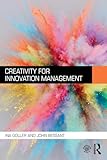Ever feel like your organization is stuck in a rut, churning out the same old ideas and products? Like a hamster on a wheel, you’re working hard, but not really getting anywhere new. Breaking free from this cycle requires a comprehensive approach to creativity and innovation management. It’s not about a sudden burst of inspiration; it’s about building a sustainable system that fosters new ideas and transforms them into tangible results.
Understanding the Core Components of a Comprehensive Approach
A truly comprehensive approach goes beyond brainstorming sessions and suggestion boxes. It involves strategically integrating various elements to create an environment where creativity flourishes and innovation thrives. Think of it as a carefully crafted recipe, where each ingredient plays a crucial role in the final outcome.
Cultivating a Culture of Creativity
The foundation of any successful innovation program is a supportive and inspiring culture. This means fostering an environment where employees feel safe to take risks, experiment with new ideas, and even fail without fear of retribution. Imagine a workplace where curiosity is celebrated, diverse perspectives are valued, and collaboration is the norm. This is the fertile ground where innovative seeds can take root and grow. As Steve Jobs famously said, “Innovation distinguishes between a leader and a follower.”
Establishing Clear Processes and Structures
Creativity thrives within a structured framework. While it might seem counterintuitive, having clear processes for idea generation, evaluation, and implementation can actually boost innovation. This provides a roadmap for employees to follow, ensuring that their creative energy is channeled effectively. Think of it as building the irrigation system that directs the flow of creative ideas.
Providing Resources and Support
Innovation doesn’t happen in a vacuum. Employees need access to the resources and support they need to bring their ideas to life. This could include funding, training, mentorship, access to technology, or simply dedicated time to work on innovative projects. Providing these resources demonstrates a commitment to innovation and empowers employees to turn their ideas into reality.
Embracing Open Communication and Collaboration
Innovation is rarely a solo endeavor. Open communication and collaboration are essential for cross-pollination of ideas and fostering a sense of shared ownership. This means creating platforms for employees to share their thoughts, provide feedback, and work together to develop and refine new concepts. A collaborative environment can amplify the impact of individual creativity, leading to truly groundbreaking innovations.
Key Strategies for Effective Innovation Management
Now that we understand the core components, let’s explore some practical strategies to implement a comprehensive approach to creativity and innovation management.
Design Thinking: A Human-Centered Approach
Design thinking places the user at the center of the innovation process. By deeply understanding the needs, desires, and challenges of your target audience, you can develop solutions that are truly valuable and relevant. This approach encourages empathy, experimentation, and iterative development, leading to innovative solutions that resonate with users.
Lean Startup Methodology: Fail Fast, Learn Faster
The lean startup methodology emphasizes rapid experimentation and iterative development. By quickly building and testing prototypes, you can gather valuable feedback and identify potential problems early on. This allows you to pivot and adapt your approach quickly, minimizing wasted resources and maximizing your chances of success.
Agile Development: Embracing Flexibility and Adaptability
Agile development is a flexible and iterative approach to project management that prioritizes collaboration and responsiveness to change. This methodology allows organizations to adapt quickly to evolving market conditions and customer needs, ensuring that innovation efforts remain aligned with strategic goals.
Open Innovation: Leveraging External Expertise
Open innovation recognizes that valuable ideas can come from outside the organization. By actively seeking out and collaborating with external partners, such as customers, suppliers, universities, and even competitors, organizations can tap into a wider pool of knowledge and expertise, accelerating the innovation process.
 Comprehensive Approaches to Creativity and Innovation Management
Comprehensive Approaches to Creativity and Innovation Management
- Goller, Ina (Author)
- English (Publication Language)
- Goller, Ina (Author)
- English (Publication Language)
- Dawson, Patrick (Author)
- English (Publication Language)
- Hardcover Book
- Galasso, Alberto (Author)
- Amazon Kindle Edition
- Goodman, Malcolm (Author)
- Dawson, Patrick (Author)
- English (Publication Language)
- Dawson, Patrick (Author)
- English (Publication Language)
- Harrington, H. James (Author)
- English (Publication Language)
- Syrett, Michel (Author)
- English (Publication Language)
- Dieffenbacher, Stefan F. (Author)
- English (Publication Language)
Measuring and Evaluating Innovation Success
Implementing a comprehensive approach to creativity and innovation management is not a one-time effort. It requires ongoing monitoring, evaluation, and refinement. By tracking key metrics, such as the number of new ideas generated, the speed of innovation cycles, and the impact of innovations on business performance, organizations can gain valuable insights into the effectiveness of their efforts and identify areas for improvement.
Conclusion
Building a culture of sustainable innovation requires a comprehensive and strategic approach. By fostering a supportive environment, establishing clear processes, providing necessary resources, and embracing open communication and collaboration, organizations can unlock the creative potential of their employees and drive meaningful innovation. Remember, innovation is not just about coming up with new ideas; it’s about transforming those ideas into tangible results that create value for the organization and its customers. What steps will you take today to foster innovation within your own organization? Share your thoughts and ideas in the comments below. Let’s continue this conversation and learn from each other’s experiences. Explore more resources on innovation management on our website and share this article with your network to inspire others to embrace the power of creativity and innovation.










